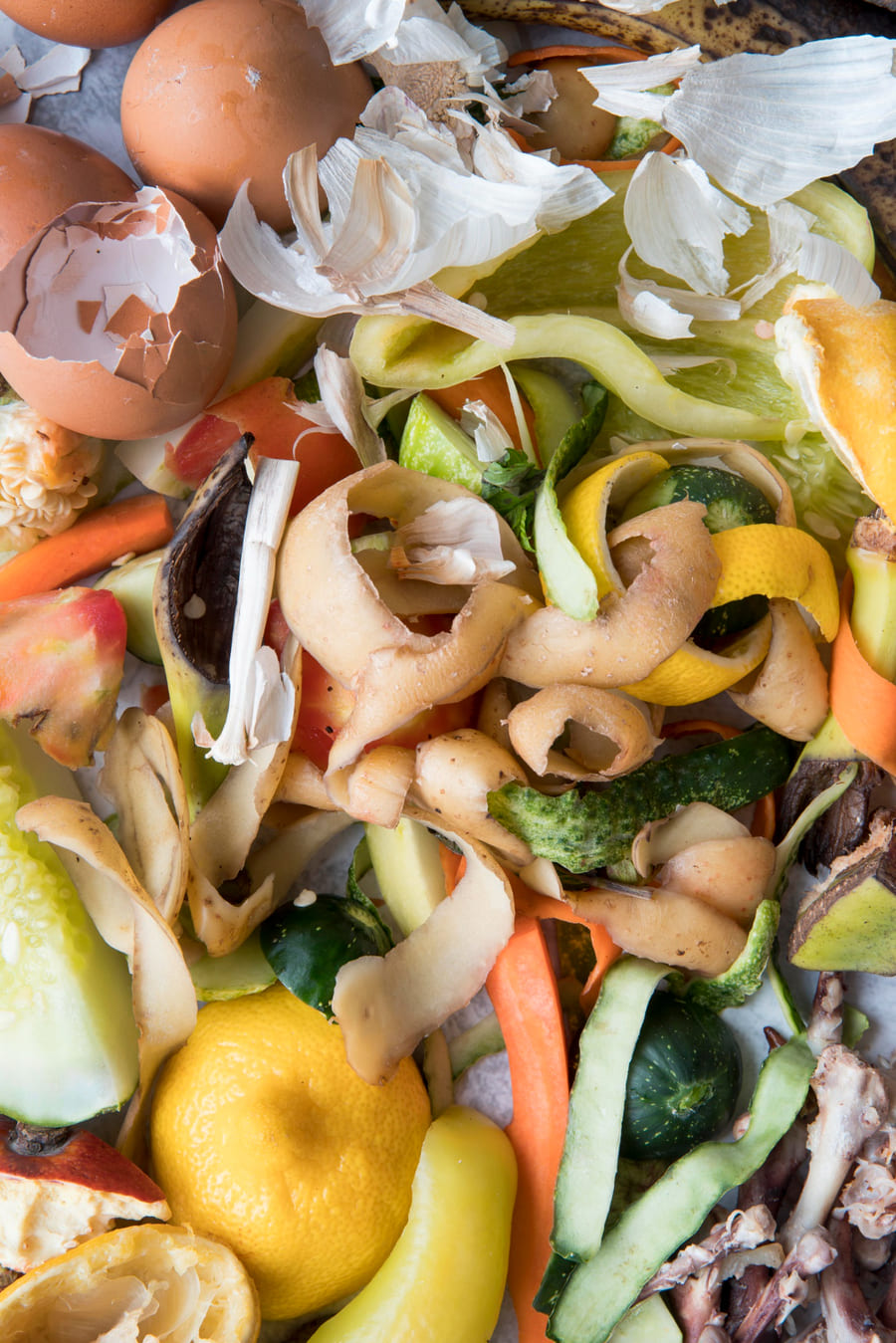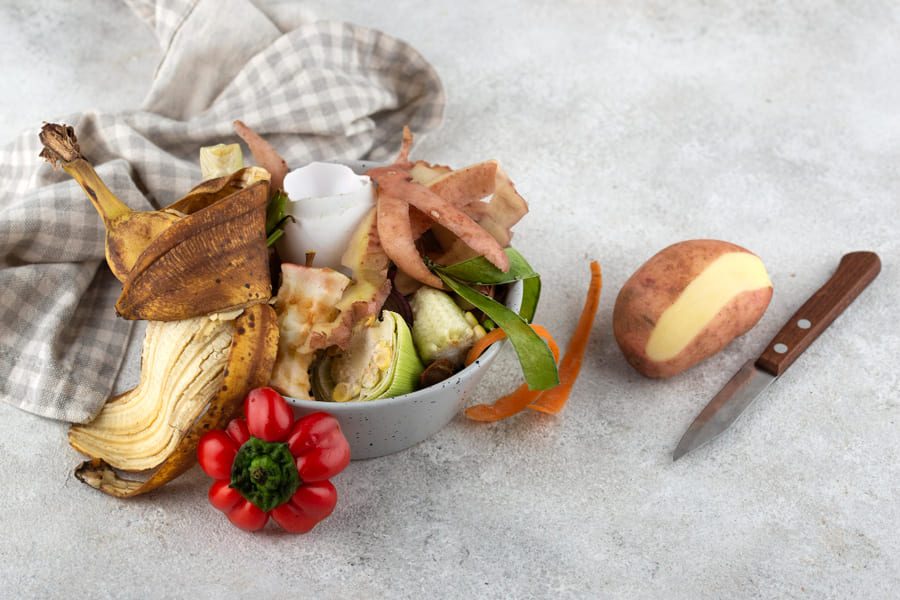Considering how prevalent food waste is today, it is more of a habit than a trend. Every time we throw away a brown banana or carrot tops, we are not just throwing away food, we are throwing away opportunity. 30-40% of the food supply in the U.S. is wasted. Billions of pounds of food and billions of dollars are lost every year.
Most of that waste does not happen in restaurants or stores. It happens at home, in the kitchen. But here is the good news, you can use your creativity to turn what was once considered “trash” into delicious treasure. There are plenty of smart, easy recipes that can help you stretch your grocery budget, lessen your effect on the environment, and uncover surprising flavor from food we often underutilized.
Ready to start cooking smarter? Here are 6 ways to use scraps to waste less in the kitchen, no compost bin needed!
6 Smart Recipes That Turn Scraps into Gold

Here are 6 easy, quick and budget friendly recipes that you can create in the comfort of your own home in a limited time of life and without wasting too many scraps.
1. Vegetable Broth (using only kitchen scraps)
Let’s start where it all begins, and that would be using kitchen scraps to make vegetable broth. Each time you are chopping a vegetable, save the scraps, skins, peels, ends, skins, think onion skins, garlic skins, carrot, celery leaves, and peels, herb stems, and put them into a freezer bag.
When you have enough scraps to fill your freezer bag, dump the scraps into a big pot, cover with water and add salt, peppercorns, and a bay leaf, boil for an hour. Strain out the scraps and you are left with a rich fragrant broth, that can be added to soups, risottos, or just sipped on when you are feeling sick.
Pro Tip: Avoid the scraps that may be bitter like the stems of cruciferous vegetables (broccoli, cabbage) and overly browned onions.
2. Croutons or Bread Pudding from Stale Bread
We’ve all experienced the inconvenience of stale bread, but that doesn’t mean it’s lost forever. In fact, stale bread is a key ingredient in two classics of the corner deli and bistro: croutons and bread pudding.
Croutons are simple. Just cube the bread, toss in some olive oil, salt, pepper, and herbs, bake them at 375°F until they are golden brown, toss them in soups or salads, or eat them directly from the tray.
Bread pudding is a bit different. Tear or cut your stale bread into chunks, soak them in eggs, milk (or cream), sugar, and vanilla and cinnamon (or flavors of your choice to soak!), and bake until set! You won’t believe that this classic dessert can be one of the most luxurious you will make.
Pro Tip: Use a crusty bread like sourdough or French as they hold their shape better than sandwich bread.
3. Leftover Chicken for Sandwiches or Salads
Whether this is a rotisserie chicken bought at the grocery store or barbequed breasts from dinner last night, leftover chicken can be recycled to great use.
A traditional chicken salad is an easy & fast option, simply shred your chicken into pieces & mix with mayo, chopped celery, onion, a little Dijon, & a squeeze of lemon. Serve it on toasted bread or just spooned into lettuce wraps.
Barbeque chicken sliders are easy: just mix the chicken with barbeque sauce, heat, serve it on buns with coleslaw and you’ll feel like you just ordered takeout from your favorite place, but it cost you nothing extra.
Pro Tip: Always discard chicken skin if it’s soggy, but save it separately and crisp it in a skillet for a savory topping!
4. Banana Peels for Smoothies or Vegan “Bacon”
Before throwing the banana peels in the garbage remember, banana peels are very healthy, a great fiber source, and could be staple food with a bit of creativity!
Smoothies: Boil the banana peels for a few minutes to soften and then discard the water! Next, add the boiled peels into the blender with the bananas, nut butter, cinnamon, and milk and you will have a thick, earth and creamy tasty smoothie!
Banana peel “bacon”: Marinate banana peels in soy sauce, smoked paprika, and maple syrup, then fry them until crispy. Would it be smokey and chewi-y just not what you expect so all three satisfyingly yummy!
5. Fruit Scraps for Vinegar or Infused Water
When thinking about its use, don’t throw away edible scraps (apple cores, citrus peels, strawberry tops, etc.) without thinking of the flavor.
Apple scrap vinegar: add the scraps (peels and cores) to a clean jar or container, fill with water and stir in a tablespoon of sugar. The jar/container can be covered loosely with cheesecloth or some other breathable cloth. Put it somewhere dark and let brew for 3-4 weeks. Now you’ve got mellow homemade vinegar for your dressings, plus cleaning.
Infused water: put your scraps (citrus peels, mint stem, cucumber ends) in water (a pitcher of water or cup of water works), and let sit in the fridge for a couple of hours. Tap water goes from boring to spa level refreshing.
Pro tip: When making vinegar, do not let the scraps dry out! If this happens mold will grow on top of the jar. If this happens discard and start again. Cover and weigh down the scraps (small weight, clean rock or glass), and with a clean rock use edible water.
6. Herb Stems for Pesto or Compound Butter
People waste a lot of herb stems because they think they don’t have a lot of flavor, when in reality a lot of times the stems are just as tasty as the green leafy part of the herb. If you take the time and effort to search for the right recipe, they can add some great texture to your dish.
Pesto: Take some parsley or cilantro stems, garlic, lemon juice, nuts (or sunflower seeds), Parmesan cheese, and olive oil and blend them together. The result is very heady, very cheap, and can be slathered on pasta or mixed with cheese on a sandwich, or even used as a condiment to cover eggs.
Compound butter: Take some soft unsalted butter, add finely chopped herb stems, lemon zest, and salt. Roll this into a log and refrigerate. Then slice and melt on steamed vegetables, steak, or roasted potatoes.
Conclusion
To sum up, modern life has made it so easy to toss food in the bin. We over buy, we forget what we have, and we throw things away too quickly. But a kitchen is a space for change and with a little intention and imagination, we can do this. That banana peel? A smoothie ingredient. That stale bread? A decadent dessert.
Everything that you bring into your kitchen is going somewhere; now it is totally up to your imagination to get there. The next time you are about to throw something in the trash, pause for a moment and ask the question, ” what could this be?” You might even end up with a little gold right in front of you.

Numrah Fareed is a freelance writer and home organization enthusiast with a passion for practical, eco-friendly living. When not typing away at her desk, she’s experimenting with DIY cleaning hacks and helping readers simplify their routines one tip at a time.
